Asia stocks edge higher as tech meanders on Nvidia; Hong Kong hit by soft earnings
Introduction & Market Context
Origin Bancorp, Inc. (NASDAQ:NYSE:OBK) presented its first quarter 2025 results on April 24, showcasing improved profitability metrics and strategic initiatives designed to enhance operational efficiency. Despite beating analyst expectations with EPS of $0.71 versus the forecasted $0.66, the stock fell 3.12% to $31.74 following the earnings release, reflecting broader market concerns about the banking sector.
The company continues to leverage its strategic positioning in high-growth markets across Texas and the Southeast, regions experiencing significant population influx and economic expansion. This geographic advantage remains central to Origin’s growth narrative amid macroeconomic uncertainties.
Quarterly Performance Highlights
Origin Bancorp reported substantial improvement in key performance metrics for Q1 2025 compared to the previous quarter. Net income increased to $22.4 million from $14.3 million in Q4 2024, while diluted EPS rose to $0.71 from $0.46. The company’s return on average assets (ROAA) improved to 0.93% from 0.57%, and the efficiency ratio decreased significantly to 65.99% from 83.85%.
As shown in the following performance highlights chart, the company maintained stable loan balances while growing deposits and improving profitability metrics:
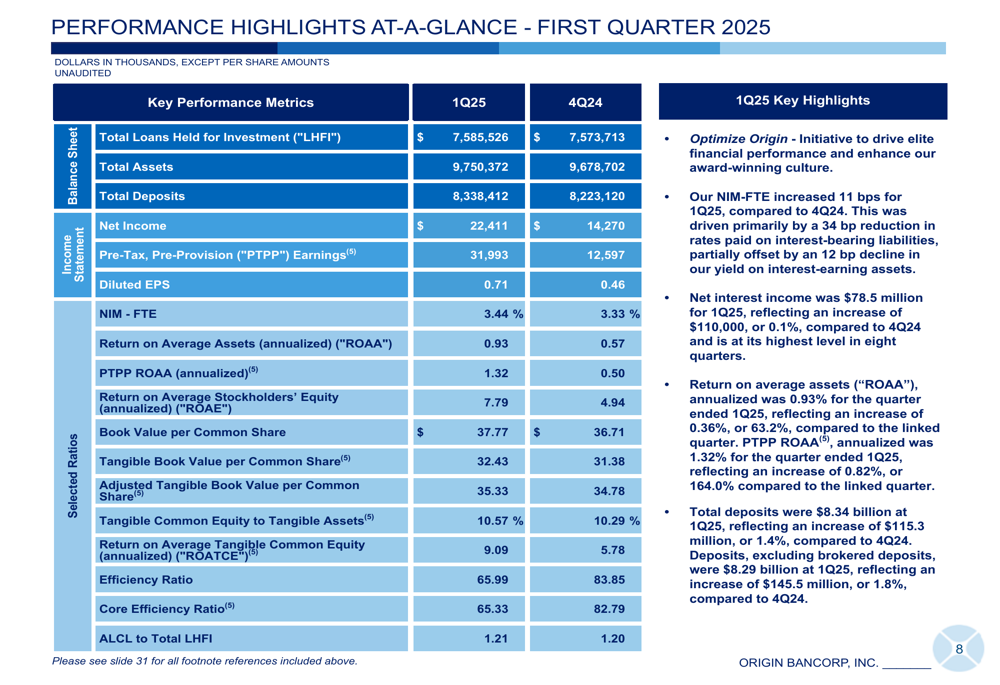
The net interest margin (NIM) expanded by 11 basis points to 3.44%, driven primarily by a 34 basis point reduction in rates paid on interest-bearing liabilities, partially offset by a 12 basis point decline in yield on interest-earning assets. This improvement occurred during a quarter when the Federal Reserve maintained stable interest rates following 100 basis points of cuts in the second half of 2024.
The following chart illustrates the factors contributing to the NIM expansion:
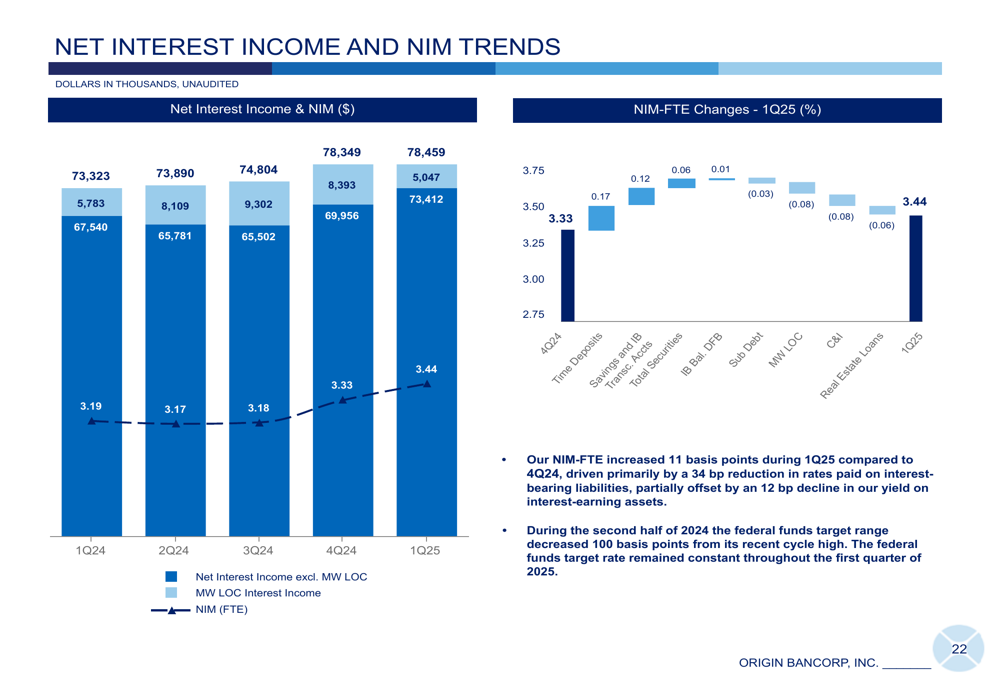
Origin’s asset quality remained relatively stable, with nonperforming loans to total loans at 1.07% and net charge-offs to average loans at 0.15% (annualized) for Q1 2025. The allowance for loan credit losses stood at $92 million, representing 1.21% of total loans held for investment.
Strategic Initiatives
The centerpiece of Origin’s presentation was its "Optimize Origin" initiative, a comprehensive efficiency program targeting a 1%+ ROAA run rate by Q4 2025. The company has identified specific optimization opportunities with estimated annualized benefits of approximately $23.4 million.
The following slide details the components and timeline of this initiative:
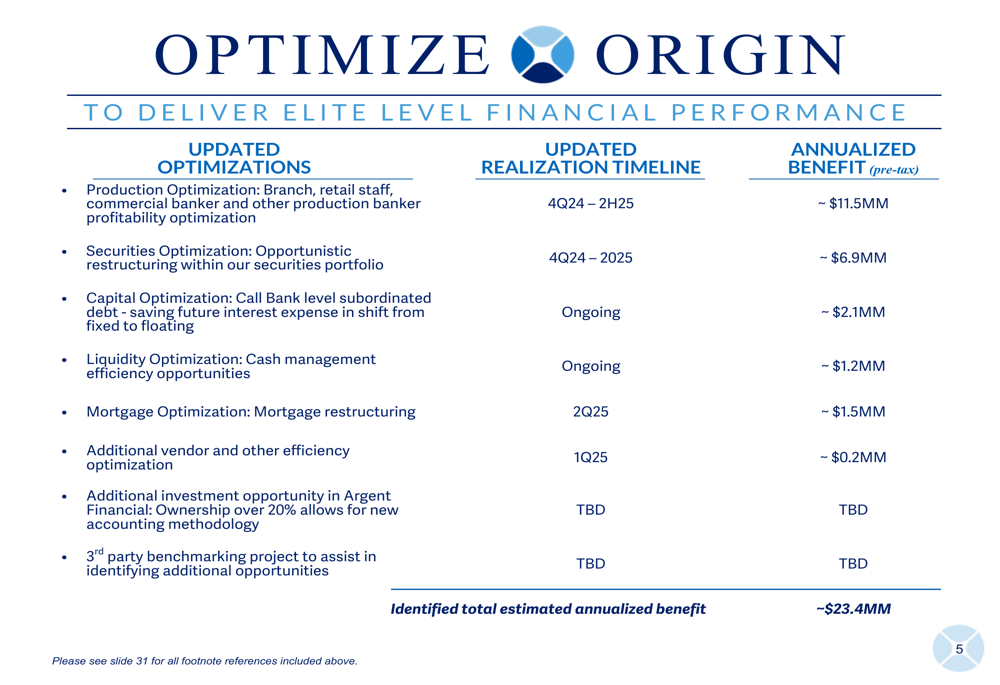
The optimization strategy encompasses multiple areas, with the largest benefits expected from production optimization ($11.5 million) and securities portfolio restructuring ($6.9 million). Additional initiatives include capital optimization, liquidity management, mortgage restructuring, and vendor efficiency improvements.
Origin has also outlined its financial outlook through 2025, projecting mid-to-high single-digit loan growth (excluding warehouse lines), mid-single-digit deposit growth, and a NIM of 3.50% (+/- 10 basis points) by Q4 2025:
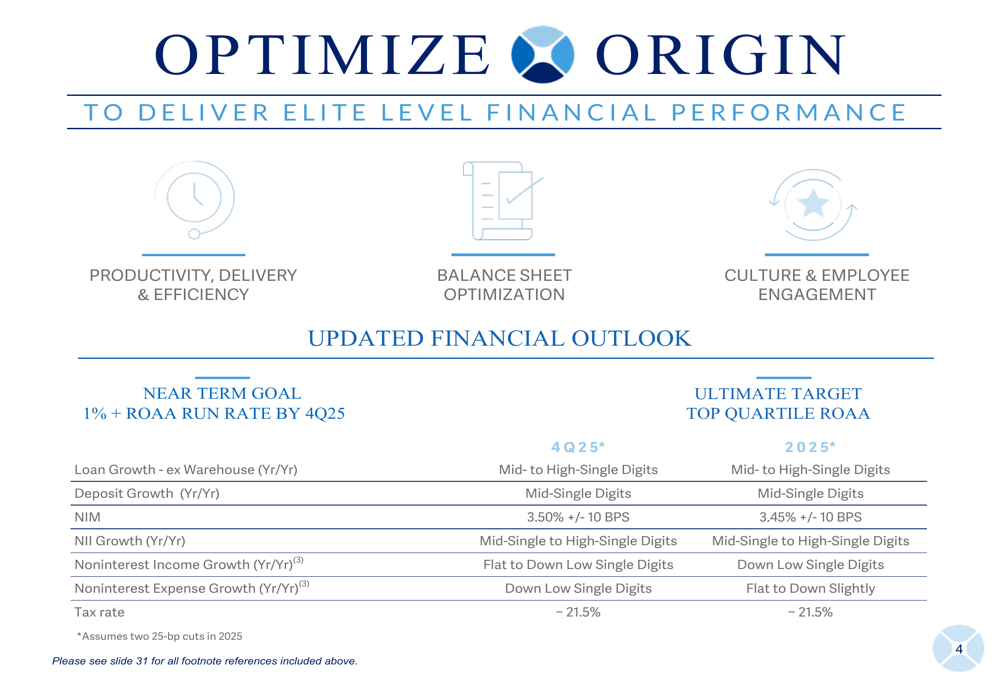
Geographic Focus and Growth Strategy
Origin continues to emphasize its strategic positioning in high-growth markets, particularly Texas and the Southeast. The company’s presentation highlighted the economic strength of these regions, noting that Texas is the eighth largest economy in the world and created 187,700 nonfarm jobs from January 2024 to January 2025.
The following map illustrates the significant net migration trends favoring Origin’s markets:
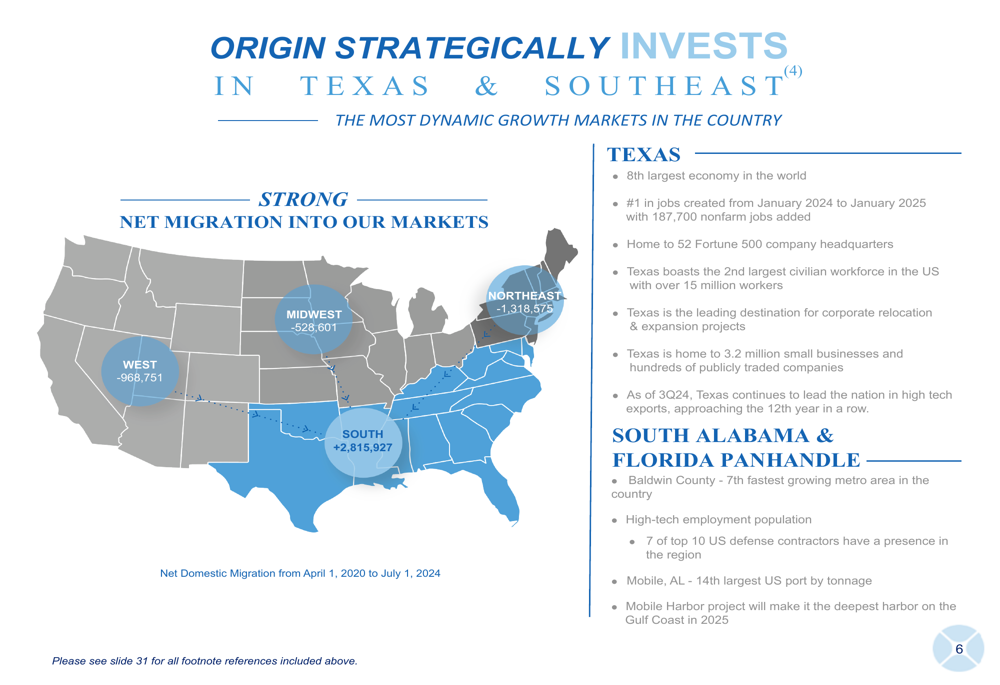
Texas represents 71% of Origin’s loans and 55% of deposits as of March 31, 2025. The company maintains 29 locations throughout 10 counties in Texas, including presence in the 4th and 5th largest MSAs in the United States. The following slide details the company’s Texas growth story:
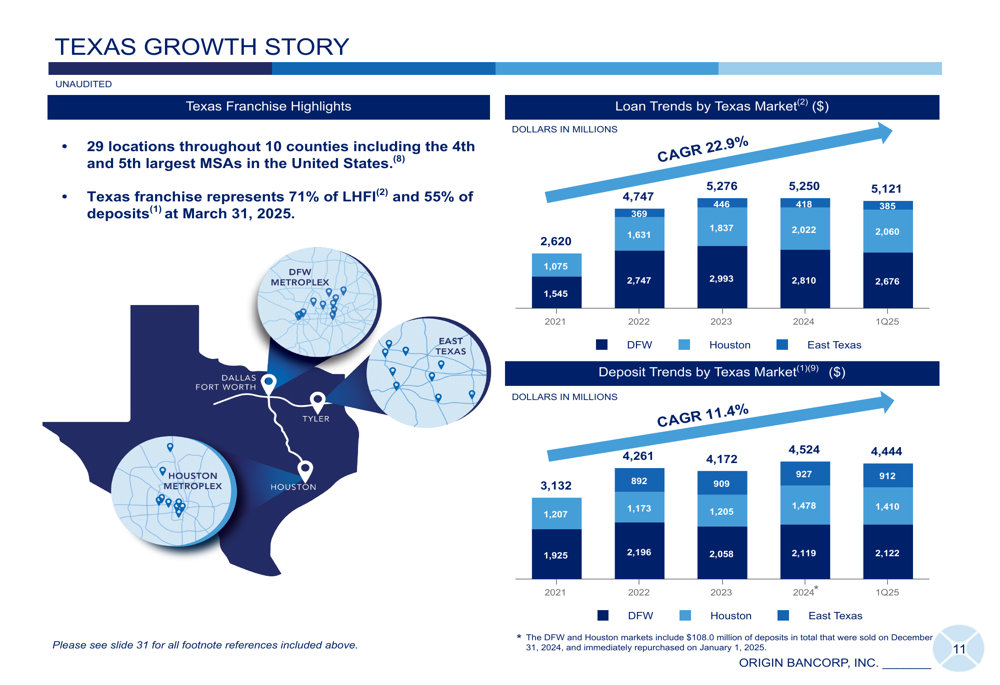
Origin’s loan portfolio remains well-diversified across sectors, with commercial and industrial loans representing 27%, residential real estate 20%, and non-owner occupied commercial real estate 19% of the total portfolio:

Financial Position and Outlook
Origin has demonstrated consistent long-term growth, with asset CAGR of 16.6% and stockholders’ equity CAGR of 18.6% from 1997 to Q1 2025. The company’s total shareholder return has outpaced the KBW Nasdaq Bank Index:
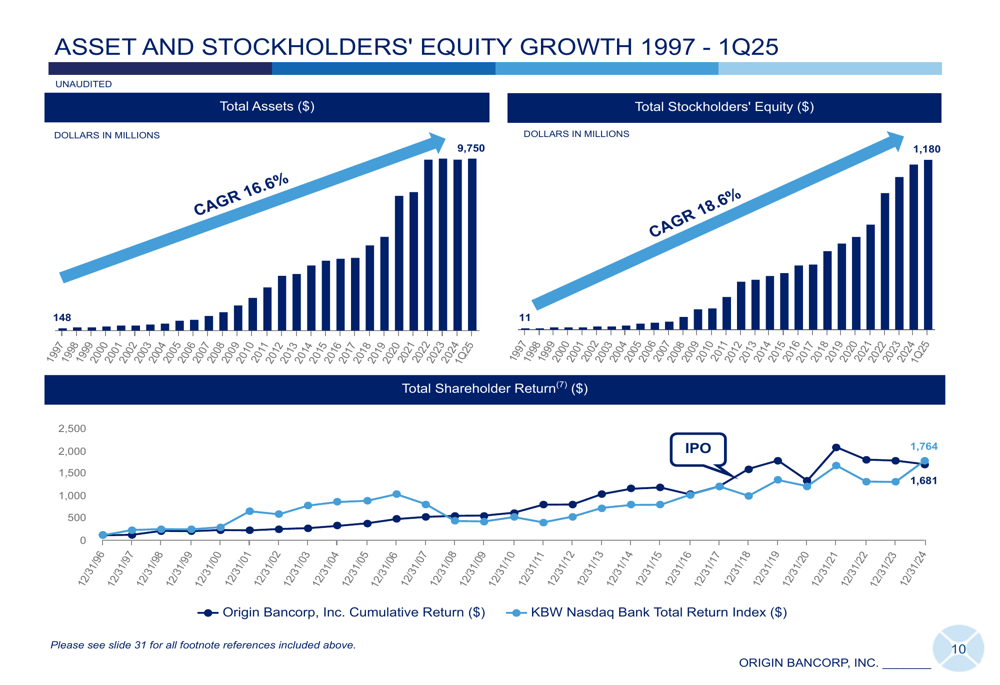
The company’s tangible book value per common share increased to $32.43 from $31.38 in Q4 2024, marking the 10th consecutive quarter of growth. Capital ratios remain strong, with the Tier 1 capital to risk-weighted assets ratio at 12.2% and total capital to risk-weighted assets at 15.3%.
Despite the positive Q1 results, management has adjusted loan growth guidance to the lower end of its previous range, reflecting caution amid macroeconomic uncertainty. During the earnings call, CEO Drake Mills emphasized the strategic advantage of the company’s geographic footprint, stating, "Our footprint is such an advantage for us in that there’s still so much migration into Texas and the Southeast."
The following chart shows the trending key measures for Origin over recent quarters:
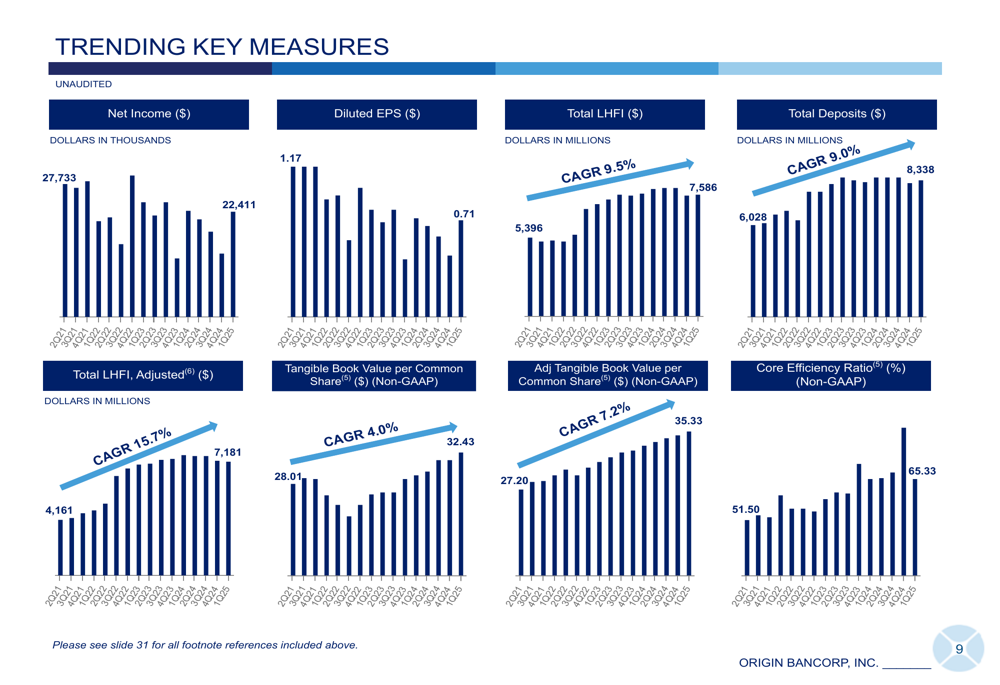
Looking ahead, Origin faces several challenges, including potential interest rate cuts that could impact net interest margins, competitive pressures in the banking sector, and the possibility of crossing the $10 billion asset threshold, which would bring additional regulatory requirements. However, the company’s strategic focus on high-growth markets and efficiency initiatives positions it to navigate these challenges while pursuing sustainable growth.
Full presentation:
This article was generated with the support of AI and reviewed by an editor. For more information see our T&C.
